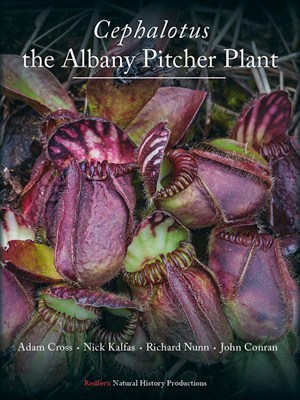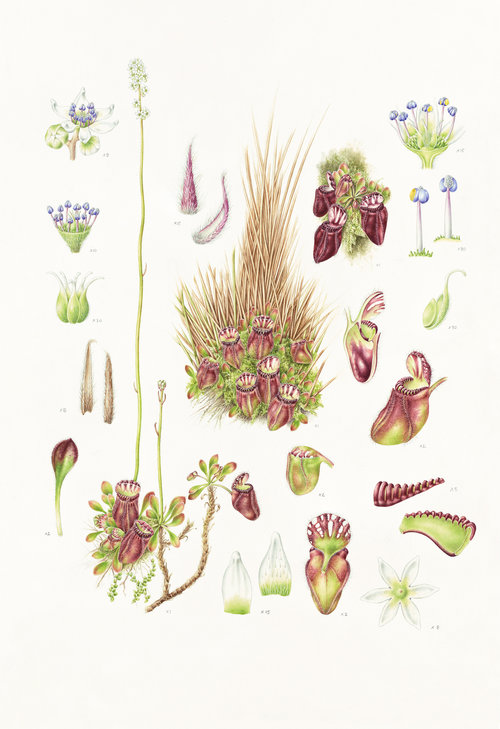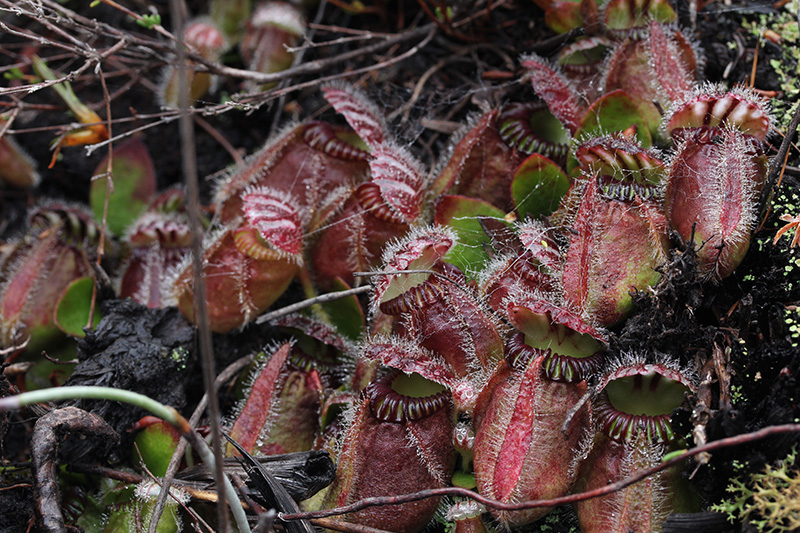Yesterday, the Botanic Gardens and State Herbarium hosted the launch of a new publication on one of Australia’s iconic carnivorous plants:
Cross, A., Kalfas, N., Nunn, R. & Conran, J. (2019). Cephalotus: The Albany pitcher plant. (Redfern Natural History Productions: Poole, UK).
 The Albany pitcher plant, Cephalotus follicularis was first described by the French botanist J.J.H. de Labillardiere from specimens collected by Leschenault de la Tour on Baudin‘s expedition to Australia. It had also been collected by Robert Brown during Flinder‘s voyage. The species is the only one in the genus Cephalotus (i.e. it is monotypic), which in turn is the only genus in the family Cephalotaceae (in the order Oxalidales), making it a truly remarkable species, not closely related to any other carnivorous plant.
The Albany pitcher plant, Cephalotus follicularis was first described by the French botanist J.J.H. de Labillardiere from specimens collected by Leschenault de la Tour on Baudin‘s expedition to Australia. It had also been collected by Robert Brown during Flinder‘s voyage. The species is the only one in the genus Cephalotus (i.e. it is monotypic), which in turn is the only genus in the family Cephalotaceae (in the order Oxalidales), making it a truly remarkable species, not closely related to any other carnivorous plant.
“Cephalotus: The Albany pitcher plant” is the first comprehensive monograph on this unique species, featuring chapters on its botanical history, systematic and evolution, detailed botanical descriptions, illustrations and photographs, discussions of the plant’s morphology, ecology and genetics, as well as sections on conservation and cultivation of Cephalotus. The book is available from the publisher’s website.
Cephalotus is instantly recognisable for its distinctive and charismatic insect-trapping leaves. It is unique amongst carnivorous plants worldwide, being the only carnivorous plant in the rosid clade of flowering plants and the only monotypic family and genus of pitcher plants. Taking into account its extreme genetic and geographic isolation in the southwest of Western Australia, its pitcher leaves represent perhaps the most astounding example of convergent evolution amongst carnivorous plants, their toothed mouths and overarching lids being highly reminiscent of Nepenthes tropical pitcher plants and American pitcher plants alike. Cephalotus is extremely localised, surviving in only a fragment of its historic range as a result of habitat loss, disruption of natural ecological succession, and poaching.
From the publisher’s website.
The authors are: Adam Cross (Curtin University), Nick Kalfas & John Conran (both from The University of Adelaide) and Richard Nunn (a member of the Board of the Botanic Gardens of South Australia). Editor of the book was Alastair Robinson (Royal Botanic Gardens Victoria). The preface was written by the Chief Botanist and Head of the State Herbarium, Michelle Waycott.
Tonight, Lauren Black, one of the artists who were commissioned to produce artwork for the book, will give an “Artist Talk” about her watercolour of Cephalotus (unfortunately sold out). The line-drawings of Cephalotus were prepared by Alastair Robinson, who won the second price of the prestigious Margaret Flockton Award with his illustration, this year.

Cephalotus follicularis, watercolour by Lauren Black.
Compiled by State Herbarium Botanist Jürgen Kellermann.



